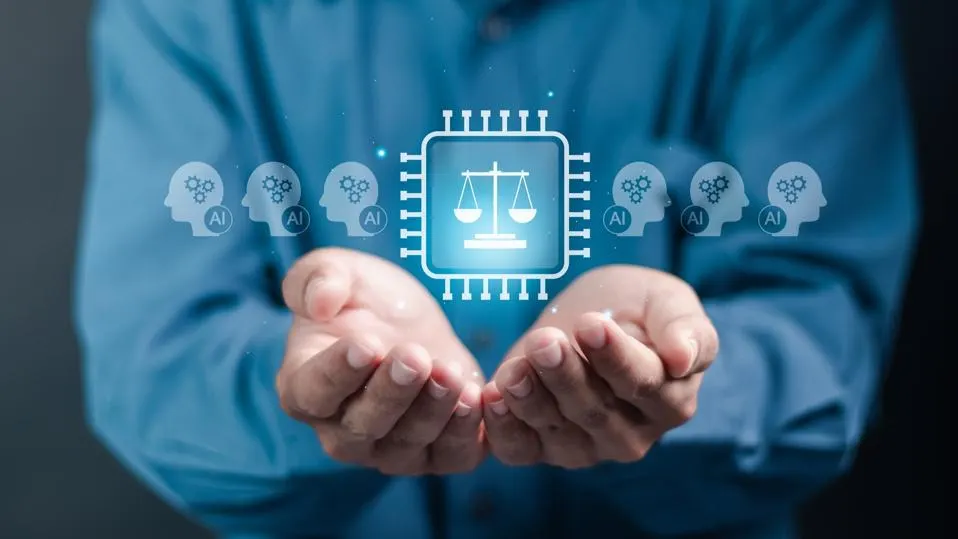We are standing on the cusp of a new technological revolution. AI is increasingly permeating every aspect of our lives, with intelligent machines transforming the way we live and work.
The potential ramifications are huge – will it lead to widespread human redundancy and a dystopian future as people’s jobs are taken over by AI and robots? Or will it help us create innovative solutions to the world’s most pressing problems?
For me, some of the most interesting questions revolve around the impact it will have on society in the long term. We know that globally, inequality is rising as the gap between the rich and poor grows wider.
Some believe AI can provide solutions to this by increasing efficiency and lowering costs, ultimately improving access to basic services and opportunities that can help people improve their lives.
On the other hand, others believe that AI will exacerbate the problems faced by many of the world’s poorest and least advantaged, further funneling access to wealth and resources to the few.
So who’s right? It’s a complex question that involves many factors, so let’s take a look at both sides of the debate.
Why Could AI Lead To Further Inequality?
Those concerned that AI will ultimately widen the gap between haves and have-nots cite several lines of reasoning.
One is that access to the technology is already concentrated in the hands of the wealthy. Studies have regularly found that the less well-off often lack access to the digital tools, such as computers and internet access, needed to take advantage of the potentially life-improving benefits of AI.
Further to this is the fact that many AI systems are developed and owned by wealthy multi-national tech companies, which ultimately control who has access to them.
The data that fuels AI analysis and decision-making is also often most easily accessible by those who have the resources to harvest, store and process it.
Then there’s the issue of job security and redundancy. It’s often noted that the jobs most at risk from automation tend to be lower-income jobs. Frequently cited examples include call center workers, delivery drivers and data entry clerks.
Although the World Economic Forum predicts that new jobs will emerge for those made redundant by automation, these might be higher-skilled occupations requiring education and training, potentially out of reach of those with limited resources.
There’s a danger that this could lead to the harmful impact of AI and automation being concentrated in less developed or more economically disadvantaged countries and regions, where a higher proportion of the workforce is in low-skilled jobs.
Finally, we can’t leave the potential for AI to cause inequality due to algorithmic bias off the list. Again and again, we’ve seen that bias in data can lead to discrimination against groups that are already disadvantaged.
For example, Amazon withdrew an AI algorithm designed to assess job applicants after realizing it could discriminate against female applicants for technical jobs simply because fewer women apply for those types of jobs. This meant that the women who did apply were less likely to match the profile of previous successful applicants and likely to be rejected!
Put together, there are clearly numerous reasons it’s right to worry that AI might not actually be the greatest leveler. But what about the other side of the coin?
How Might AI Make Us More Equal?
The crux of this argument is that AI’s great promise of increasing efficiency could ultimately lead to a reduction in the cost of many of the essential goods and services we need.
Access to cheaper, more nutritious food, better quality accommodation and improved education services could potentially help people become healthier and lift themselves out of poverty and deprivation on a societal scale.
It also promises to improve efficiency and access to healthcare. A move towards preventative rather than reactive care, thanks to predictive AI algorithms, could mean more illness is spotted at an early stage where treatment is far less expensive. These cost savings will, in theory, lead to a reduction in overall healthcare costs and better patient outcomes.
The flip side of the previously-mentioned bias problem is that when due care is taken to ensure data is clean and algorithms are fair, AI should provide solutions that contribute towards more equitable outcomes.
Take insurance, for example, which is based on the principle that many people pay a small amount to ensure that everyone is protected from the cost of major misfortune.
Thanks to AI-driven analytics, the risks can be assessed far more accurately, leading to more efficient insurance, where everyone pays a fair amount according to their individual risk profile.
Of course, it’s important to note the difference between invited and unavoidable risk – smokers and those who like to drive fast, for example, versus those born with a genetic disposition to cancer.
But AI makes it possible, in theory, for this to be accounted for, so fairness and equality are predicated on choices rather than fortune.
As we can see, as well as the potential for AI to exacerbate inequality, it also has the capacity to create a more equitable society. So – how do we make sure we get it right?
Solving Social Equality In An AI-Powered World
Of course, the truth is that no technology is inherently good or bad. Its potential to be beneficial or damaging to society depends entirely on how we choose to use it.
With this in mind, I believe that whether AI results in a net loss or gain in equality rests on a number of factors.
Firstly, there’s the issue of responsible AI. This is the principle that AI should be developed to be ethical, secure, unbiased, transparent and accountable.
When we’re talking about equality, this means being particularly careful of the impact it could have on the lives of people who are already marginalized and disadvantaged.
For example, I’d like to see companies diverting some of the savings they make through AI efficiencies into training and upskilling people whose jobs might be at risk. It only seems fair that they should get their bite at opportunity, too.
And governments will have to shoulder some of the burden, too. It will be down to them to make sure that the development of ethical and responsible AI is encouraged and rewarded, while also putting guardrails in place to limit the harmful impact of AI.
They’ll have the job of encouraging and incentivizing investment in infrastructure in underserved areas, as well as improving AI literacy rates among disadvantaged populations.
Ultimately, ensuring AI works to improve equality rather than harm it will require collaborative efforts between governments and businesses, as well as global cooperation to ensure that rich nations don’t benefit at the expense of the less well-developed.
What could possibly go wrong? Well, obviously, plenty! Of course, there will be those who decide that ethics and responsibility are simply “nice-to-haves” when there’s so much money on the table.
But, where we do manage to get it right, it could lead to AI contributing towards improving the lives of everyone, not just those with wealth and power.




